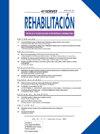Effect of exercise-based cardiac rehabilitation on dyspnoea in heart failure: A systematic review of assessment tools, outcomes, and FITT parameters
IF 0.4
Q3 Medicine
引用次数: 0
Abstract
Exercise-based cardiac rehabilitation (EBCR) programmes are strongly recommended to enhance exercise capacity and quality of life in heart failure (HF). However, their effects on dyspnoea have not been systematically reviewed, possibly due to the knowledge gap in the assessment of dyspnoea. The aim of this study was to recognise the dyspnoea tool used in HF for the EBCR trial, assess the effects of EBCR on dyspnoea and identify which patient characteristics and FITT parameters (Frequency, Intensity, Time and Type) are associated with better outcomes. A review and meta-analysis of randomised controlled trials following the PRISMA guideline were performed, including fifteen studies (n = 766 participants). Up to 8 dyspnoea measurement instruments were identified in the studies. EBCR showed a moderate effect size on dyspnoea (d = 0.69, 95% CI 0.54–0.84). Larger effects were seen in patients < 65 years (d = 0.77, 95% CI 0.54–0.99) and in non-hospitalised patients (d = 0.735, 95% CI 0.550–0.921). Greater effects were observed for low-intensity (d = 0.79, 95% CI 0.44–1.15) and multimodal programmes (d = 1.12, 95% CI 0.47–1.77). Programmes with three sessions per week and ≥12 weeks were the most common. Findings were limited due to the varying dyspnoea scales, highlighting the need for standardised assessment in HF.
基于运动的心脏康复对心力衰竭患者呼吸困难的影响:评估工具、结果和FITT参数的系统回顾
强烈推荐以运动为基础的心脏康复(EBCR)方案,以提高心力衰竭(HF)患者的运动能力和生活质量。然而,它们对呼吸困难的影响尚未被系统地审查,可能是由于在评估呼吸困难方面的知识差距。本研究的目的是识别用于心力衰竭EBCR试验的呼吸困难工具,评估EBCR对呼吸困难的影响,并确定哪些患者特征和FITT参数(频率、强度、时间和类型)与更好的结果相关。对遵循PRISMA指南的随机对照试验进行回顾和荟萃分析,包括15项研究(n = 766名参与者)。研究中发现多达8种呼吸困难测量仪器。EBCR对呼吸困难的影响中等(d = 0.69, 95% CI 0.54-0.84)。在患者中观察到更大的影响;65岁(d = 0.77, 95% CI 0.54-0.99)和非住院患者(d = 0.735, 95% CI 0.550-0.921)。低强度方案(d = 0.79, 95% CI 0.44-1.15)和多模式方案(d = 1.12, 95% CI 0.47-1.77)的效果更大。每周3次且≥12周的治疗方案最为常见。由于不同的呼吸困难量表,研究结果有限,强调了对心力衰竭进行标准化评估的必要性。
本文章由计算机程序翻译,如有差异,请以英文原文为准。
求助全文
约1分钟内获得全文
求助全文
来源期刊

Rehabilitacion
Medicine-Rehabilitation
CiteScore
0.80
自引率
0.00%
发文量
63
期刊介绍:
La revista que es desde hace más de 40 años la publicación oficial de la Sociedad Española de Rehabilitación y referente de la mayoría de las Sociedades de la Especialidad de los países americanos de habla hispana. Se publican 5 números pluritemáticos al año y uno monográfico sobre un tema del mayor interés y actualidad designado por el consejo de redacción.
 求助内容:
求助内容: 应助结果提醒方式:
应助结果提醒方式:


